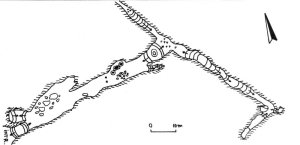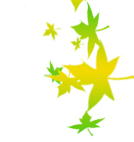The Cave in the Comarnicelor Gorge (Munteanu Murgoci)
It is located in the StogĹźoare Massif, at 930 m absolute altitude and 30 m from the lowest point in the Cheia valley, on the western slope of the gorge. It was studied and described ever since 1898 by Gh. Munteanu-Murgoci. (C. Goran, 1983).
The entrance is wide (10/3 m) and oriented towards the west, but the cave is made of the almost perpendicular crossing of three galleries that developed on cracks. The gallery network is 235 m long. Visitors need protection clothes and light sources.
The main gallery is the largest (3-5 m wide and 5-8 m high), concretioned with stalactites, stalagmites, columns and rimstone dams. At the end of it, there is a great group of stalagmites and domes called “The Family”. Another 50 m further, the main gallery overcrosses the gallery of Cracks, almost perpendicularly on it.
To the left, the guano gallery is ascendant on the first 10 m and then descendant, with many fallen parts. The right sector is concreţioned with stalactites and stalagmites, and in its final part with rimstones. From there, passing through a 4 m pitch, you’ll get in to a three levels erosion gallery.
 |
It is a fossil cave, horizontal in its first part, then slightly descendant, rather well concreĹŁioned, where the parietal leaks are frequent, especially along the middle gallery, the one with guano. The floor is covered in a lot of clastic material, meaning limestone fragments or concretions. On the middle gallery there are spots of guano and, on the last track, there are pieces of rotten wood. In that last part there also is a small sinkhole filled with water.
Judging by the aspect of morphology and direction of the galleries, the cave is undoubtfully a fossil meander of the river Cheia.
The cave is relatively cold (7° C in the air and 6.2° C in the water, in july 1966), very dump and not ventilated.
The fauna is relatively rich, as it shelters caving microfauna species – diplod myriapods (Dacosoma motasi and Trachysphaera racovitzai), trechines coleoptera (Duvalius delamarei). There were also found Ursus spalaeus remnants.


